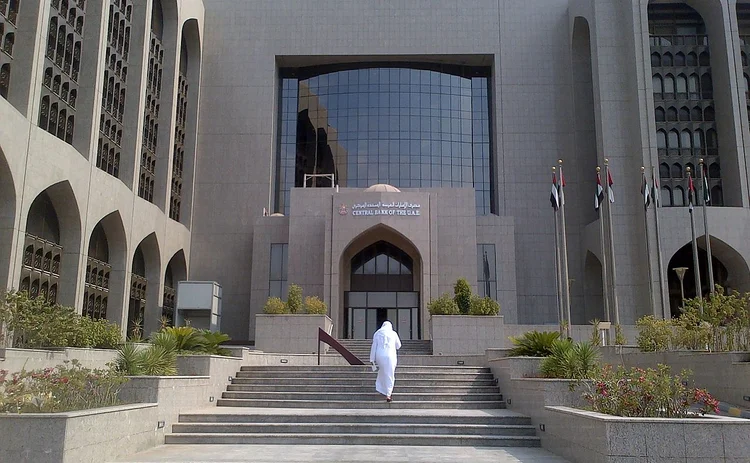
Reserve manager: Central Bank of the UAE
The Middle Eastern institution approved a new investment policy, allowing it to diversify into new asset classes

The Central Bank of the United Arab Emirates (CBUAE) has implemented a new investment and external manager policy over the past year. Approved by the board in November 2020, the approach involves the adoption of a new strategic asset allocation (SAA) framework.
The central bank manages more than $116 billion in assets. The new investment approach incorporates new asset classes, aimed at reaping higher risk-adjusted returns in a low-yield environment that has dominated markets over the past decade.
Additionally, the institution has, for the first time, decided to allocate assets for investment by external fund managers. This should allow the CBUAE to compare the risk-adjusted returns generated by its internal reserves management team with the performance of new private-sector counterparts. This interaction is expected to broaden the institution’s investment insights and analysis.
Historically, the CBUAE’s reserves portfolio was dominated by low-risk money market assets. The new framework strikes a balance between the central bank’s objectives and constraints. The investment objectives, risk and return, are assessed by analysing typical central bank constraints, such as time horizon, liquidity and legal, as well as unique restrictions.
The key board decision in the process was the adoption of a maximum risk budget and the reference benchmark SAA that expresses the board’s risk tolerance. In this new structure, the reserve management team maximises returns against the benchmark, while carefully considering downside risk and key risk factors as the first line of defence.
New internal governance
Internal governance is divided across three levels, which assign roles and responsibilities. First, the board at the strategic level approves the investment policy and governance structure, while making key decisions on the SAA, risk tolerance and active risk budget. Second, the monetary and reserve committee approves investment guidelines, oversees the reserve management function and considers tactical asset allocation recommendations.
Third is the operational level, where the central bank separates the roles of the reserve management, risk management and compliance, and finance departments. The risk committee ensures all risks are monitored, while a separation of duties and straight-through processing creates necessary controls, meaning checks and balances are in place.
In this new structure, the reserve management team maximises returns against the benchmark, while carefully considering downside risk and key risk factors as the first line of defence
Risk and liquidity constraints are determined largely by the central bank’s main policy goals to maintain stability of the national currency by defending the UAE dirham peg against the US dollar, and by the promotion and protection of the financial system’s stability. These two goals are analysed and stressed through a reserves adequacy framework.
This assesses potential claims on foreign exchange reserves arising from balance-of-payment disturbances, alongside stresses in the domestic banking system. The central bank has a mandatory legal requirement to maintain foreign exchange reserves sufficient to cover at least 70% of the monetary base. This directly aligns with the board’s liquidity parameter to ensure that the CBUAE always has liquid assets during times of crisis.
Such clarity on liquidity gives the CBUAE the ability to diversify assets and enhance long-term returns on reserves in surplus to those expected to be needed for immediate liquidity.
Investment through four tranches
The SAA analysis includes dividing the portfolio into four tranches. The money market tranche is used to manage daily liquidity. The capital market tranche aims to enhance returns and diversification. The gold tranche holds gold assets to hedge against inflation risk and offers additional diversification, aligning gold exposures to peer central banks. And the long-term investment tranche aims at maximising long-term return and ensuring capital preservation and growth over time.
Within the investment grade universe, the central bank has broadened the asset classes in its portfolio. This will likely be implemented in a gradual manner.
A key innovation is that leading external asset managers are expected to start handling part of the portfolio in 2022. This is the first time the CBUAE has approved working with external partners. This should allow the central bank to compare risk-adjusted returns with the best in the private sector, while potentially offering access to new asset classes..
The new investment policy has been accompanied by further development of systems and processes for measurement, management and reporting of risks. This policy is broadly aligned with the IMF’s Guidelines for Foreign Exchange Reserve Management.
The Central Banking Awards were written by Christopher Jeffery, Daniel Hinge, Dan Hardie, Victor Mendez-Barreira, Ben Margulies and Riley Steward
Only users who have a paid subscription or are part of a corporate subscription are able to print or copy content.
To access these options, along with all other subscription benefits, please contact info@centralbanking.com or view our subscription options here: http://subscriptions.centralbanking.com/subscribe
You are currently unable to print this content. Please contact info@centralbanking.com to find out more.
You are currently unable to copy this content. Please contact info@centralbanking.com to find out more.
Copyright Infopro Digital Limited. All rights reserved.
As outlined in our terms and conditions, https://www.infopro-digital.com/terms-and-conditions/subscriptions/ (point 2.4), printing is limited to a single copy.
If you would like to purchase additional rights please email info@centralbanking.com
Copyright Infopro Digital Limited. All rights reserved.
You may share this content using our article tools. As outlined in our terms and conditions, https://www.infopro-digital.com/terms-and-conditions/subscriptions/ (clause 2.4), an Authorised User may only make one copy of the materials for their own personal use. You must also comply with the restrictions in clause 2.5.
If you would like to purchase additional rights please email info@centralbanking.com






